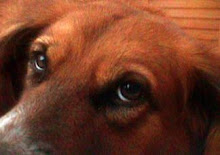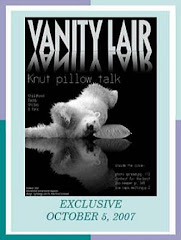
Alfred Vance, a Victorian Music Hall artist, and ex-solicitor's clerk, was the person who coined the term "Zoo", which offended the Fellows of the "Zoological Society's Gardens" by which they preferred the "Zoo" to be known. Vance performed a song in 1870 called "Walking in the Zoo":
On Sunday afternoon, is to toddle in the Zoo.
Weekdays may do for Cads, but not for me and you,
So, dress'd right down the road, we show them who is who.
The walking in the Zoo, walking in the Zoo,
The O.K. thing on Sunday is the walking in the Zoo.
Walking in the Zoo, walking in the Zoo.
The O.K. thing on Sunday is the walking in the Zoo."
"London Zoo, launched in 1828, first called itself a menagerie or "zoological garden," short for "Gardens and Menagerie of the Zoological Society of London." The abbreviation "zoo" first appeared in print in the UK around 1847, when it was used for the Clifton Zoo, but it was not until some twenty years later that the shortened form became popular in the song "Walking in the Zoo on Sunday" by music-hall artist Alfred Vance. The term "zoological park" was used for more expansive facilities in Washington D.C., and the Bronx in New York, which opened in 1891 and 1899 respectively."
"Vance's popular song "Walking in the Zoo" has been cited by Desmond Morris (in Gestures: Their Origin and Distribution) as the earliest known use of the term "O.K." in its current sense. ... The song refers specifically to the Zoological Gardens at Regents Park, London."
"The first modern zoo, established particularly for scientific and educational purposes according to its founders, was the Ménagerie du Jardin des Plantes as part of the Muséum national d'histoire naturelle in Paris (1793). It was, significantly, laid out like a picturesque park -- a semblance of Nature emphasized by Rousseau -- while the buildings themselves housed caged animals as if in museum display cabinets. About thirty years later, the Zoological Society of London was founded in 1826 by Stamford Raffles. The Zoological Society of London stated in its charter that its aim was "the advancement of zoology and animal physiology and the introduction of new and curious subjects of the animal kingdom". The members of the Zoological Society of London adopted the idea of the early Paris zoo when they established London Zoo as a scientific zoo in 1827. It opened in 1828 in Regent's Park, admitting members and their guests. Only in 1847 were working people allowed in, for a shilling. London Zoo admitted paying visitors to aid funding of its scientific work. The taxonomic presentation of animals at the London Zoo became the model for the nineteenth century. The success of London Zoo set off a Victorian wave of similar establishments. ..."
(from " "Zoo")
We went to the zoo today...
"Anyone with an interest in the cultural heritage of the United Kingdom during the first half of the twentieth century will inevitably find themselves drawn towards picture postcards.
They were enormously popular, and millions were manufactured, depicting just about anything and everything in the lives of our parents, grandparents and great-grandparents.
But there is a catch: although deciphering the handwritten messages on the backs of used cards can be enjoyable in its own right, the photographs on the fronts very often tell us almost nothing they are ‘silent snapshots’ of the past.
In those days, just as it is now, a day at the zoo was a break from routine, an enjoyable diversion. However, the passage of time has gradually revealed some fascinating and marked differences between then and now.
Dublin Zoo 1914
The postcards featured would almost certainly be impossible to duplicate as a collection of originals and, even if that were not true, it would take years of searching and many hundreds of pounds, to gather a comparable set.
See the curious zeedonk on page 78, the famous elephant trainer, Lorenzo Lawrence, on page 48 or the boxing kangaroo on page 38. All are now scarce, and most of the zoos shown are now long closed and some virtually forgotten.
We Went To The Zoo Today... contains almost two hundred of the best postcards of their kind. They are often amusing, sometimes poignant, but always of interest. This book endeavours, and hopefully succeeds, to give these ‘silent snapshots’ the voice they deserve.
-About Alfred Vance,"Walking in the Zoo"/lyrics
-Zoo history on wikipedia/engl.& dt. (weniger umfangreich)
-Zoo (an interesting summary by Amusement Logic)/engl.
-Yesterday...Today...read article: "What are zoos for?"/08.05.2009
-Alan Ashby"We went to the zoo today", & on Jamie Clubb's blog















































1 Kommentar:
Dieser Post ist selbstverständlich für alle zoohistorisch Interessierten, aber noch viel mehr für alle, die über so lange Zeit immer wieder in den Zoo gehen und uns berichten, uns die kleinen und großen Momente der Zoobewohner mitleben lassen...ob in Wuppertal, Berlin, Nürnberg, den Highlands oder anderswo...Habt einfach Spass, trotz aller Widersprüche manchmal..."Walking in the zoo is the OK thing to do....". Einen schönen Sonntag allen!
Birgit
Kommentar veröffentlichen